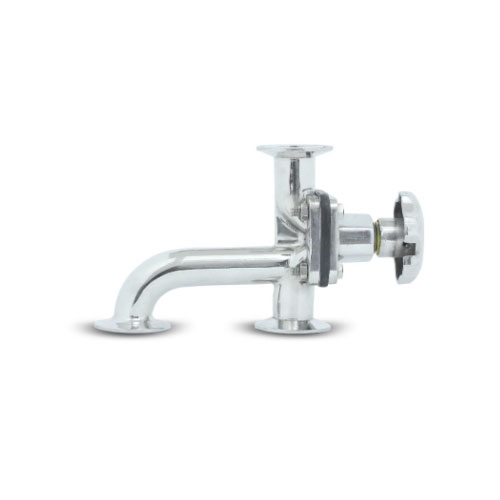Chandigarh Engineers presents high-quality zero dead leg valves designed for optimal hygiene and performance in sanitary applications. Our zero dead leg valves are engineered to minimize stagnant areas, ensuring thorough cleaning and preventing contamination in critical fluid handling systems.
Features:
- Zero Dead Leg Design: The innovative design eliminates dead leg areas where fluid can stagnate, allowing for complete drainage and cleaning. This design reduces the risk of contamination and ensures a hygienic system.
- High-Quality Materials: Manufactured from premium stainless steel (such as SS316L), our valves are resistant to corrosion, high temperatures, and aggressive cleaning agents, ensuring long-term durability and reliability.
- Easy Maintenance: Designed for easy cleaning and maintenance, our zero dead leg valves facilitate efficient disassembly and reassembly, contributing to minimal downtime and operational efficiency.
- Tri-Clamp or Welded Connections: Available with tri-clamp or welded connections, our valves provide secure and leak-proof installations, ensuring a reliable fit within existing systems.
Benefits:
- Enhanced Hygiene: The zero dead leg design ensures that all areas of the valve are accessible for cleaning, reducing the risk of bacterial growth and contamination, which is critical in industries like food, beverage, and pharmaceuticals.
- Improved Performance: By eliminating dead legs, our valves provide better flow dynamics and reduce the potential for product build-up, ensuring consistent and efficient operation of fluid handling systems.
- Durability and Reliability: Made from high-quality stainless steel, our valves offer exceptional resistance to corrosion and wear, extending the lifespan of the valve and reducing maintenance requirements.
- Cost-Effective Maintenance: The easy-to-clean design minimizes the need for extensive maintenance, reducing operational costs and improving overall system efficiency.
Applications: Chandigarh Engineers' zero dead leg valves are ideal for use in:
- Food and Beverage Industry: For ensuring hygienic flow control in processing and packaging systems.
- Pharmaceutical Manufacturing: In applications requiring high cleanliness standards and prevention of contamination.
- Biotechnology: For maintaining sterile conditions in bioprocessing applications.
- Chemical Processing: Where efficient cleaning and prevention of contamination are crucial.
